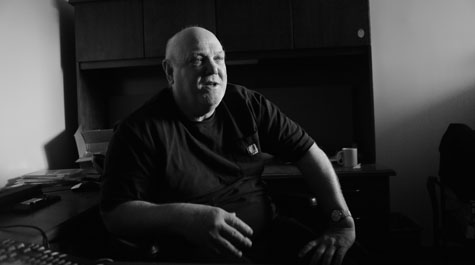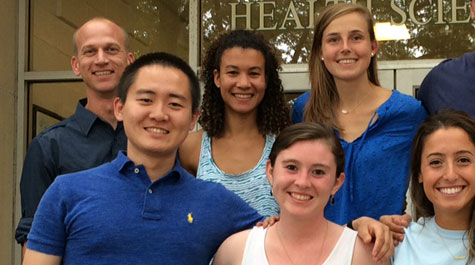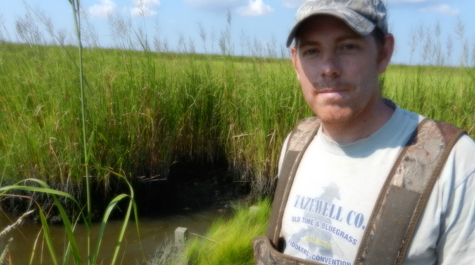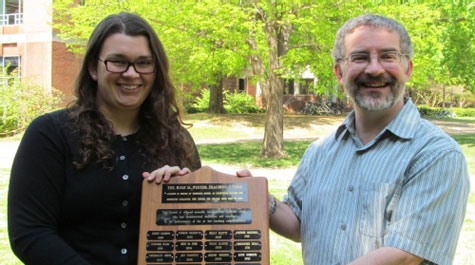W&M faculty in the media this month
Following are selected examples of William & Mary faculty and staff members in the media. - Ed.
Studies: Gratitude improves well-being on a day-to-day basis
In a Dec. 21 San Francisco Chronicle article, John B. Nezlek, a professor of psychology at William & Mary, discussed how gratitude improves a person’s well-being.
According to the Chronicle, Nezlek researched a group of adults in Poland and found that people experienced reduced stress if they recorded what they were grateful for each day.
Nezlek then conducted a second study using W&M students and that analysis presented similar results. But Nezlek noted that daily gratitude did not automatically transform a person’s evaluation of how meaningful they felt their life was, known as eudemonic well-being.
However, Nezlek says the positive result of daily gratitude is cause enough to “remember your blessings.”
Would Rich Perry helming Energy Department ‘zero out’ Jefferson Lab?
In a Dec. 20 Daily Press article, David Armstrong, Chancellor Professor of Physics at William & Mary, discussed whether or not Rick Perry, President-Elect Donald Trump’s choice for Energy Secretary, would affect a local physics lab.
According to the Press, the president-elect has chosen former Texas Gov. Rick Perry to replace Dr. Ernest Moniz as the head of the U.S. Department of Energy (DOE). The president-elect’s nomination has brought about much debate because Perry has publicly stated that the department should be dismantled.
“His statements about abolishing the Department of Energy show an incredibly superficial understanding of the mission of the Department of Energy,” said Armstrong. “It is much broader than he believes.”
The article also states that it’s unclear if Perry fully understands the department’s role in supporting national laboratories that conduct physics research and its charge to improve the nation’s energy infrastructure.
“Without the Department of Energy, the U.S. would not have been able to take part in the recent discovery of the Higgs Boson (particle),” said Armstrong. “And the U.S. would not be able to continue to be a world leader in particle physics — the field that leads to a fundamental understanding of the universe around us.”
The Jefferson Lab is completing a $338 million DOE-funded upgrade to its accelerator which will double its energy capacity, enabling fundamental physics research that cannot be accomplished anywhere else.
“Jefferson Lab is known internationally as a center of excellence in nuclear physics,” Armstrong said. “Hampton Roads is known worldwide because of Jefferson Lab. And Jefferson Lab receives essentially all of its funding from the Department of Energy's Office of Science.”
4 ways slacklining will make you a stronger athlete
In a Dec. 8 Outside Magazine article, W&M Associate Professor of kinesiology M. Brennan Harris discussed how slacklining, or the sport of balancing on a rope that is fixed high above the ground, improves overall athletic ability.
According to the article, studies have suggested that the sport brings people together in an entertaining way and helps to prevent knee injuries and aids in the strengthening and the rehabilitation of legs.
“It’s simple and portable,” said Harris. “Tying a line between two trees with your friends may be more appealing than standing on a balance board in your room. If you can make exercise enjoyable, people are more likely to do it.”
“Ghost Forests” are, surprisingly, a sign of resilience
In a Dec. 1 article by Hakai Magazine, Kirwan Lab director and Assistant Professor of physical science, Matthew Kirwan at the Virginia Institute of Marine Science discussed how he is studying an area of land that his family owns that is being affected by rising waters.
The article states that Kirwan’s great-great-grandparents bought land which is located along the Blackwater River in Robbins, Maryland, in the 19th century. Kirwan noticed that in the years since, much of the land has flooded, and the forest which was thriving is now full of dead or dying trees waiting to fall. Kirwan decided to research these so-called “ghost forests,” or dead coastal forests that are becoming marshland with his students. Kirwan has learned that sea level rise has killed more than 400 square kilometers of coastal forest around Chesapeake Bay since the 1850s.
Kirwan’s research has shown that these “ghost forests’’ are not indicative of a tragic future event. Ghost forests are actually offering evidence that nature is responding to climate change and is transforming itself to protect the area further inland.
“This creation of ghost forests is a sign that marshes are being preserved,” said Kirwan. “They are migrating.”



















